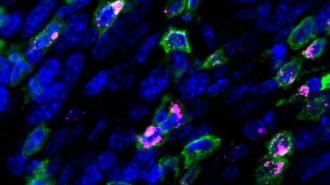Gene causes body-fat disorder
- More than 2 years ago
From Toronto, at the 82nd annual meeting of the Endocrine Society
A gene linked to a form of muscular dystrophy also causes a disease that deposits fat unevenly after puberty. In people with Dunnigan-type familial partial lipodystrophy, fat melts from arms, legs, and buttocks while depositing in the head, neck, and abdomen. People with the disease are also inclined to diabetes, high blood pressure, and heart disease.
Previous studies mapped mutations in a family prone to partial lipodystrophy to a region on chromosome 1 containing about 120 genes. Robert A. Hegele and his colleagues at the John P. Robarts Research Institute in London, Ontario, instead looked for any mutations in individual genes in this region that they suspected could have functions related to the disease.
They found their target on the 12th gene they investigated. One mutation in this gene, called lamin A, causes a form of muscular dystrophy affecting the limbs. Another mutation was present in all 22 family members affected with partial lipodystrophy and in none of 25 family members without the disease.
Since fat around the abdomen is a known risk factor for heart disease and diabetes, lamin A may help explain connections between these diseases, Hegele says. The results also illustrate that it’s now possible to hunt for mutations in specific genes rather than continuing to map disease genes.







